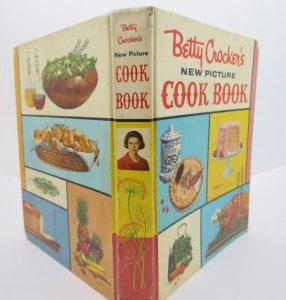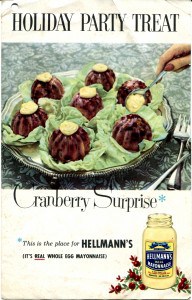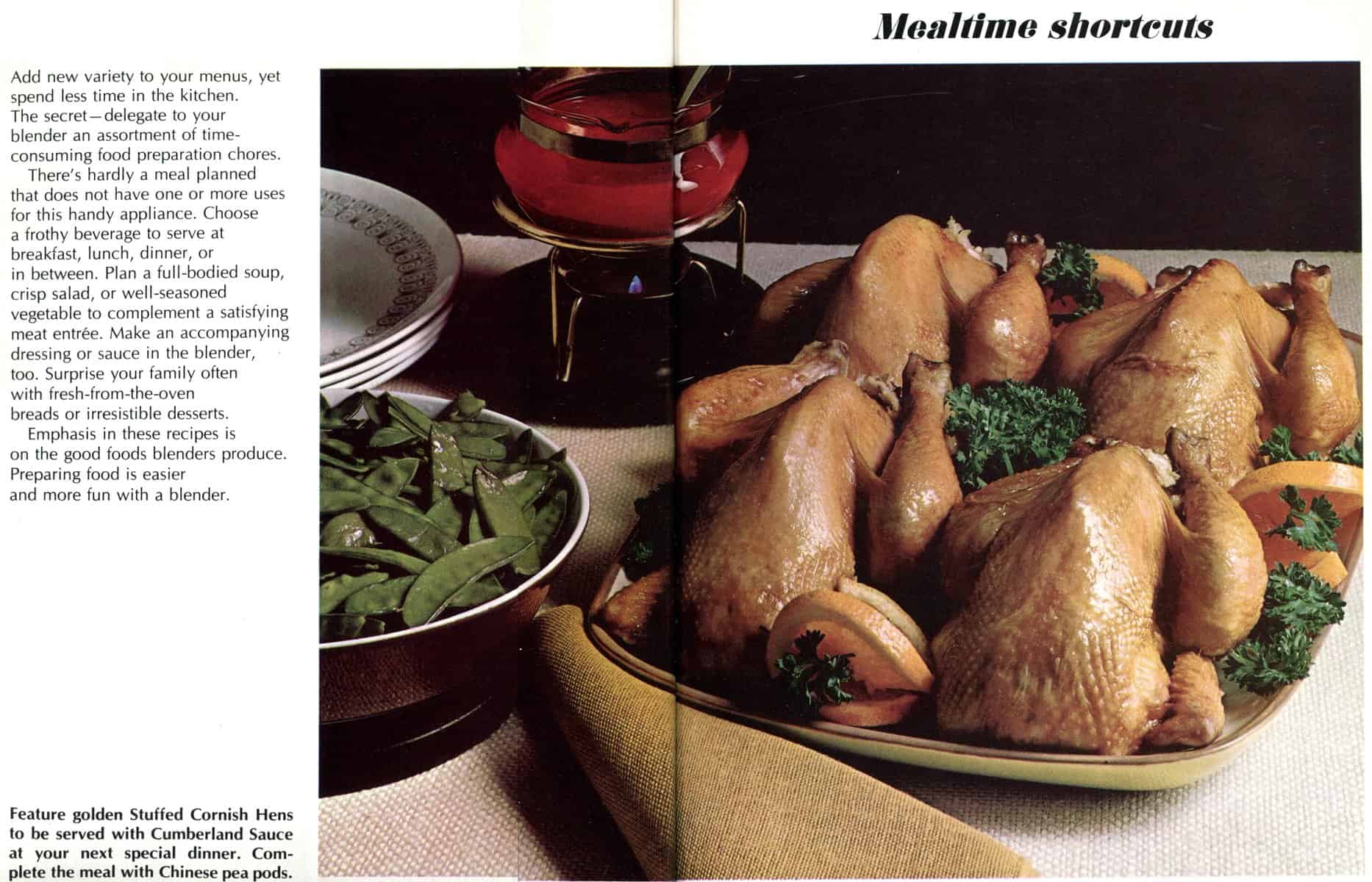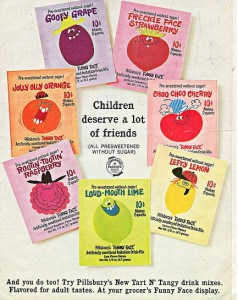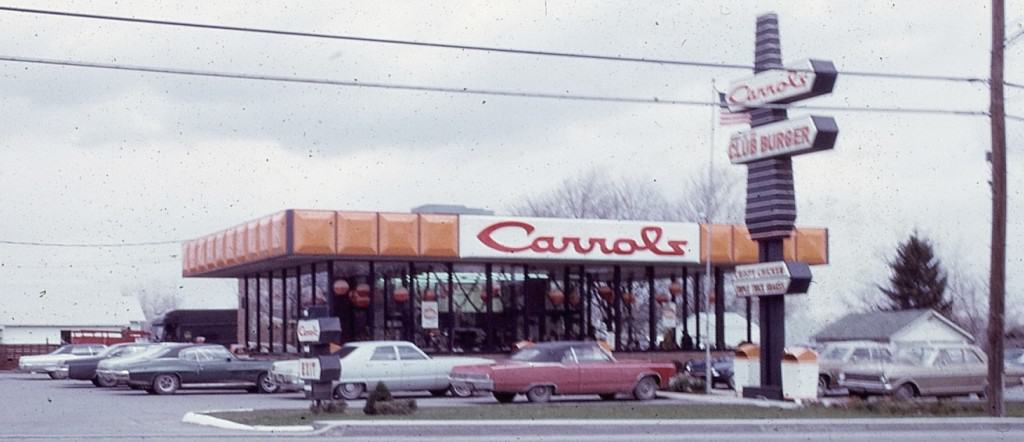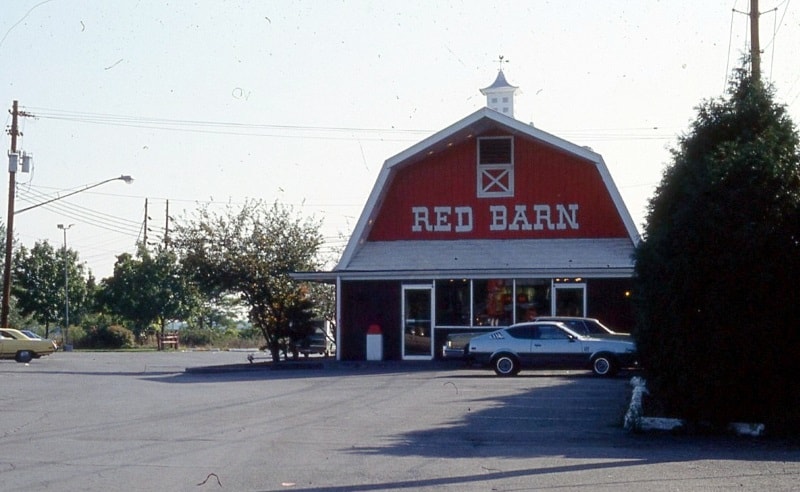1960s Food: From Jello to Mastering French Cooking
By Anne Dealy, Director of Education and Public Information
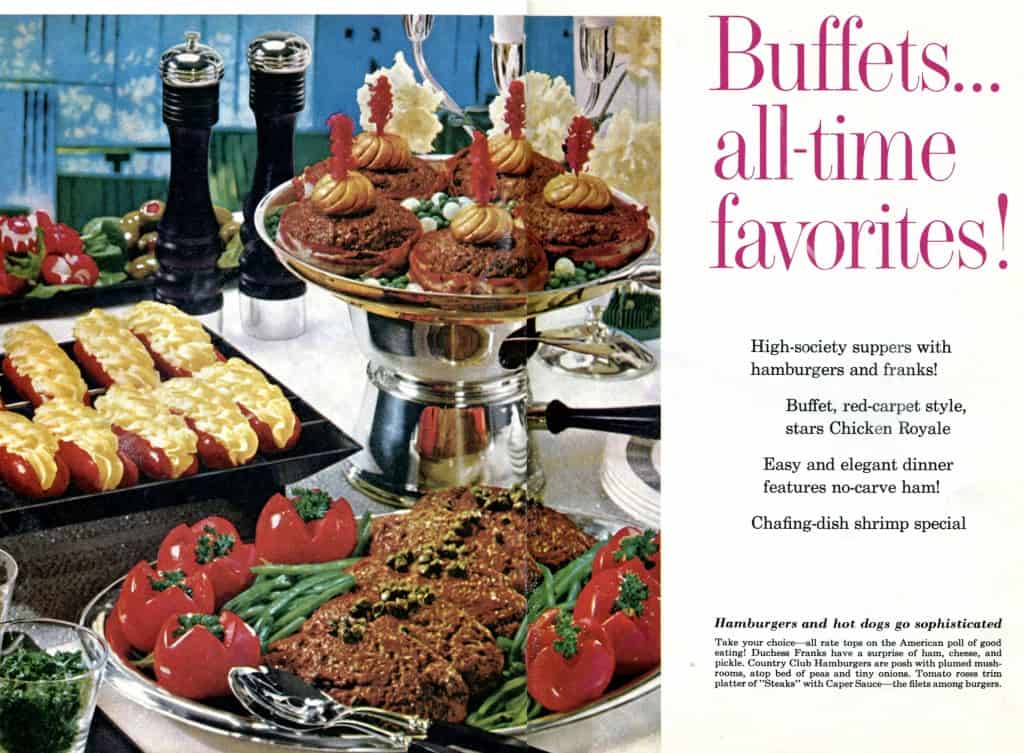
The ideal of 1960s food convenience: hot dogs and hamburgers as the center of an elegant but quick buffet.
In these days of local, organic, and natural food trends, there are not many people willing to return to the American food fads of the 1960s, aside from baby boomers nostalgic for their childhood, and Mad Men fans. According to the wonderful and useful Food History Timeline, trends in 1960s food included barbecue, fondue, ethnic cuisine, French and haute cuisine (thanks to Julia Child), buffets and, of course, cocktail parties. Science and the space race influenced 1960s food and food advertising, reflected in the popularity of Tang, Dream Whip, and other “space age” canned, frozen or processed foods. This was a decade in which scientific, engineered foods were wonders of the American economy and people embraced them with excitement (Soylent Green, anyone?).
Born in the final month of the decade, I have no personal memories of the foods that were popular then. Shortly before I was born my mother acquired the 1961 Betty Crocker New Picture Cookbook that I remember throughout my childhood and adolescence. She updated it in the early 1990s and still regrets getting rid of the older one, though it was falling apart and greasy from being stored over the stove. I always wanted to try that pink frosted cake on the cover or the Baked Alaska I remember seeing inside. Alas, Mom never made either for us. We did, however, have the ever-present Jello dessert for family gatherings. In our case, it was thawed frozen strawberries and nut-covered cream cheese balls immersed in strawberry Jello, a pretty typical 1960s-style dessert.
Though not a new food, the popularity of gelatin-molded salads and desserts reached their peak in the 1960s. The Better Homes and Gardens 1963 cookbook Best Buffets contains no less than six gelatin-based desserts and their 1971 Blender Cookbook contains 11 recipes with gelatin. For comparison, the current Betty Crocker Cookbook: 1500 Recipes for the Way You Cook Today has 2 gelatin salads, proclaiming one a “WOW” and “definitely not your 1950s-style gelatin mold!” A bride of the 1990s, I don’t even own a Jello mold.
Several gelatin recipes are to be found in our collection of community cookbooks from the decade. Mildred Jennings’ Casual Comments column in the Geneva Daily Times offered a variety of molded dishes, like a Rhubarb Mold that called for frozen rhubarb, frozen strawberries, canned crushed pineapple and Jello, combining the decade’s mania for gelatin and prepared foods. The Geneva Order of the Amaranth Cookbook has a recipe for Corned Beef Mold with tomato juice, canned corned beef, hard-boiled eggs, cucumber, celery, onion, salad dressing and gelatin. One 1960s advertisement for Jello even promotes refreshing Thanksgiving leftovers by serving turkey salad in a cranberry Jello ring. Ads for Hellman’s Mayonnaise promoted use of their mayo in conjunction with Jello, resulting in the interesting spectacles below.
The 1960s were a decade when food preparation really accelerated its shift from inside the household to the factory and supermarket. The focus on a million and one ways to use Jello, mayonnaise, PET milk, Spam or other manufactured products was the continuation of this gradual change which began in the late 19th century and accelerated after World War II. Women’s participation in the labor force increased over the decade, and food manufacturers took note of this trend. Like appliances, processed and instant foods were developed to speed up or eliminate cooking time, leaving the housewife free for other pursuits.
WHAT YOUR BLENDER WILL DO FOR YOU
Keep your blender handy where you can use it every time there is a timesaving job it can do. This includes almost every meal. In each, there is one or more steps that the blender can do faster and easier than you can do it by hand.
Better Homes and Gardens Blender Cookbook
New processed foods sold during the decade included Coffee Rich, Cremora and Coffee-Mate, Green Giant frozen foods, Pet Ritz Pie crusts, Wundra Instant Flour, Maxim and Taster’s Choice instant coffee, Carnation Instant Breakfast drink, Baco’s, Chunky soup, Shake ‘n Bake, Spaghetti O’s and the first frozen bread dough. New foods were introduced to the cook through magazines, newspapers and printed recipe fliers distributed by product manufacturers.
Kid-focused junk foods were developed to appeal to the Baby Boom generation, and Lucky Charms, Pop-Tarts, Bugles, Apple Jacks, Frosted Mini Wheats, and Pringles chips came out in the 1960s. Kool-Aid, invented in the 1920s, got a huge boost in the 1950s and 1960s from Boomer kids. It was so popular that Pillsbury came out with a rival product in 1963, called Funny Face, which was promoted by Jennings in her column. Both drinks came in packets and were sweetened either with added sugar or with cylamate, a sugar substitute banned in 1969 as a carcinogen.
More prosperous and less active at work, Americans waistlines were also expanding, and manufacturers developed diet foods and drinks like Tab, Diet Rite Cola, Diet Pepsi, Product 19, Total Cereal and Kellogg’s Concentrate. The latter apparently looked like fish pellets and was marketed as “the greatest concentration of nutrients ever offered in a single all-purpose food.” A sixties example of ideas about nutrition winning over taste.
Fast food restaurants sprang up across the country to feed the booming population of families. Wendy’s, Domino’s Pizza, Hardee’s, Taco Bell, Arby’s, and Long John Silver’s Fish ‘n Chips had their birth in the 1960s. In Geneva we had regional chains like Carrol’s Drive In on Hamilton Street and the Red Barn on Exchange Street. These chains would eventually be done in by competition from big national chains like Kentucky Fried Chicken, which arrived in 1969, McDonald’s in 1972, and Burger King, which replaced the local Carrol’s restaurant in 1976.
Some of these trends are borne out locally by a survey of our Geneva Directories. In 1960 the city hit its peak population of 17,286. It had 38 restaurants, 20 taverns and 38 groceries. Nine years later, while population had dropped by just 3 percent, the number of grocery stores had fallen by nearly half, while bars and restaurants had increased by 12 percent. This was a product of consolidation in the grocery business, but also of Americans changing food habits. Of course, the trend has continued to the present. According to the 2014 printed Yellow Pages Geneva had 39 restaurants and just four supermarkets in town, one of which has since closed.
In opposition to the increased consumption of packaged and processed foods, Julia Child introduced the American public to the delights of French cuisine, persuading every home cook that she could produce fine cuisine in her kitchen by mastering the principles of French cooking. Late in the decade, many young people rebelled against both haute cuisine and processed food with the back-to-the-land movement, seeking out natural and organic foods, baking bread and reviving canning and pickling.
Since food is never just about feeding the body, but always wrapped up in culture and identity, food in the 1960s was as full of contradiction, change and upheaval as other aspects of the decade. A smaller city, Geneva was a bit behind the curve on some of the decade’s trends, and perhaps less subject to some of the extremes of food fads. Nonetheless, despite the area’s current prominence in sophisticated food and wine and in the farm to table movement, I suspect you will still find your fair share of Jello dishes at our local church suppers.
Further Reading on 1960s Food:
1960s Kool Aid Ads
Funny Face Drink
Investigating 1960s Food Recipes: Mid-Century Recipe Blog
Whatever Happened to Carrol’s Restaurant?
A Brief History of Gelatin Salad
The Jello Gallery at the LeRoy Historical Society
Women, feminism and convenience foods


